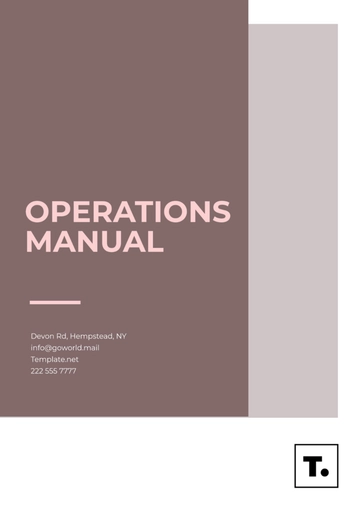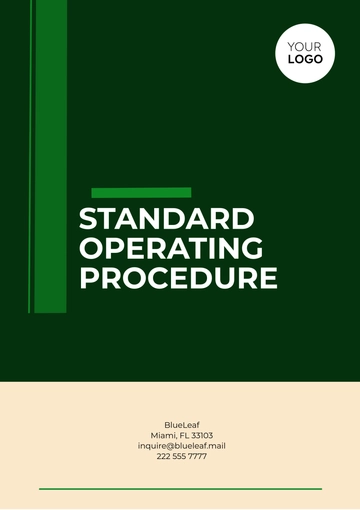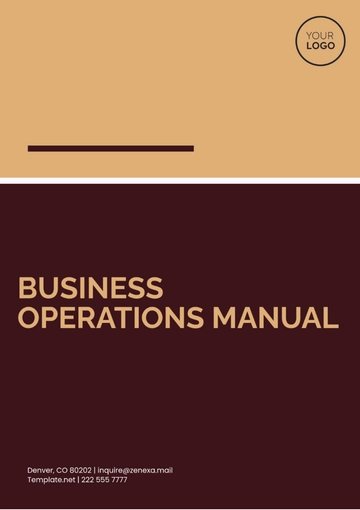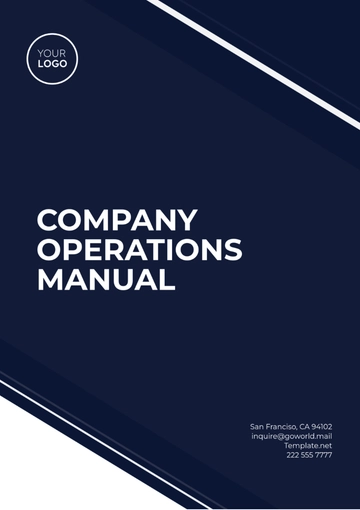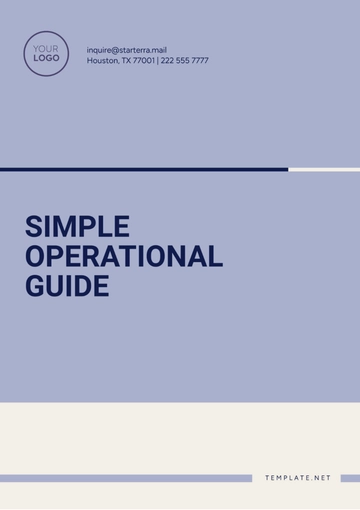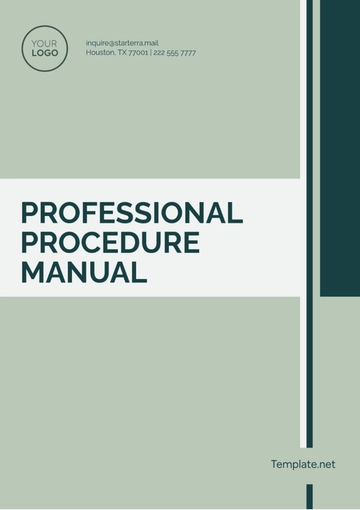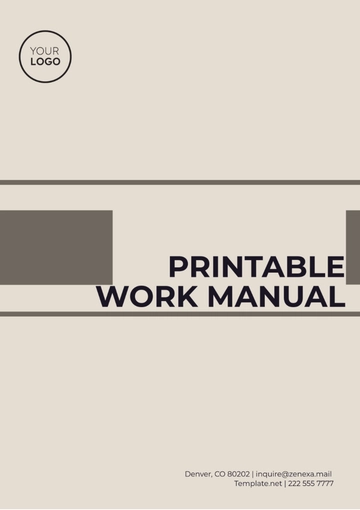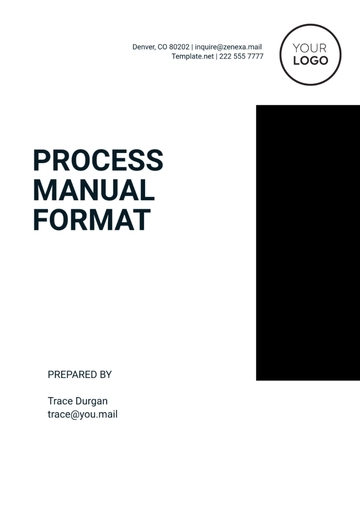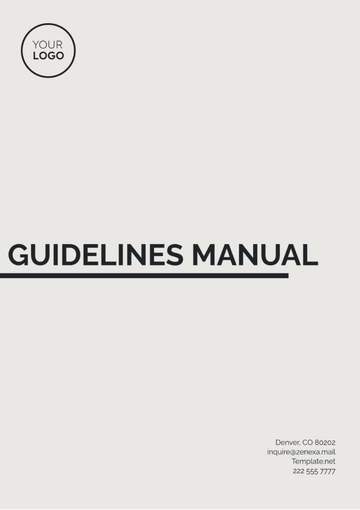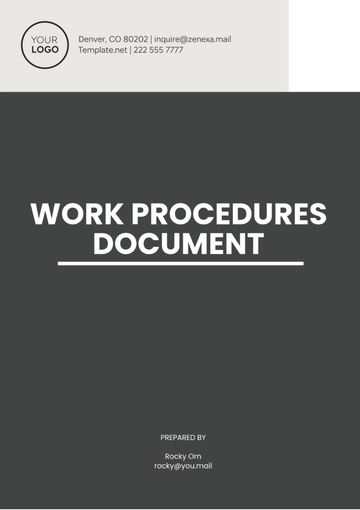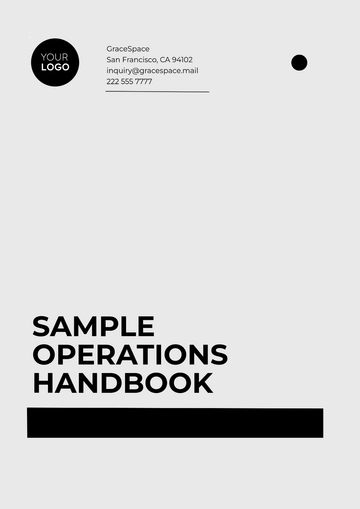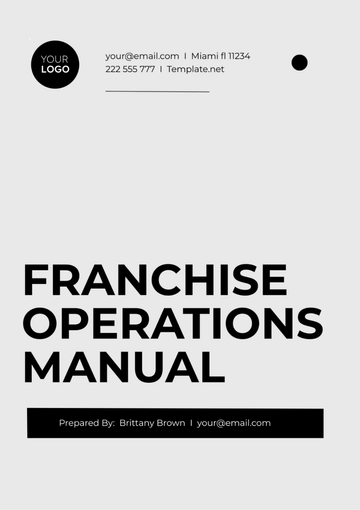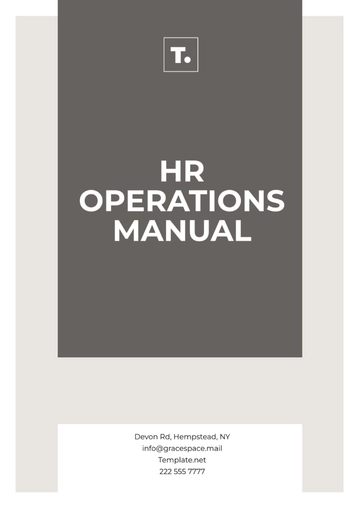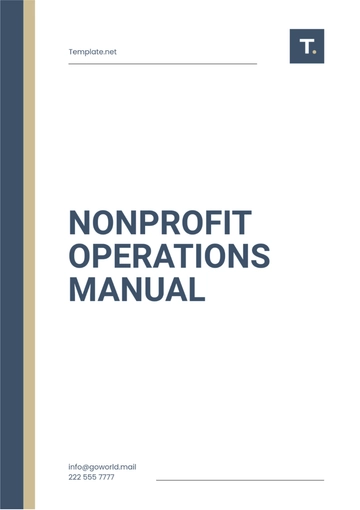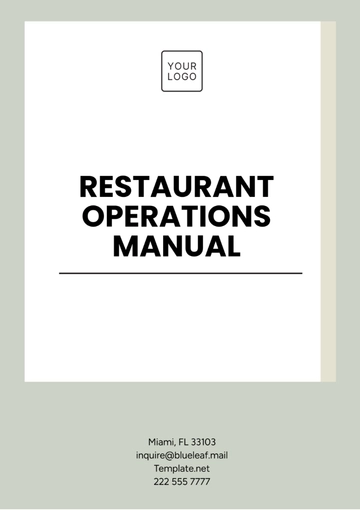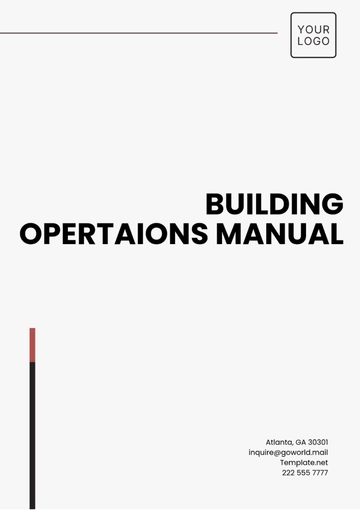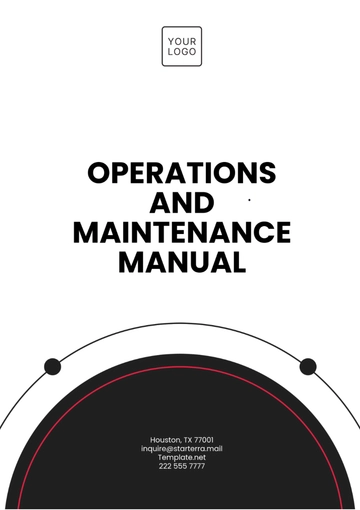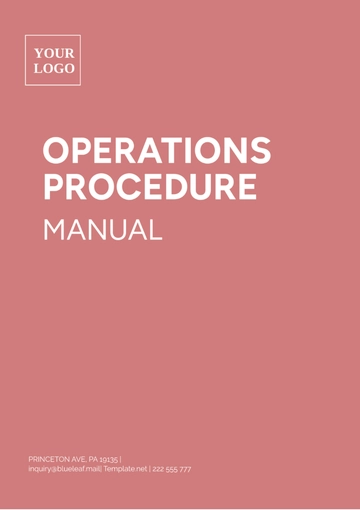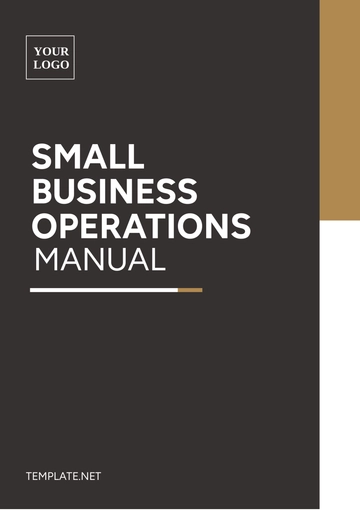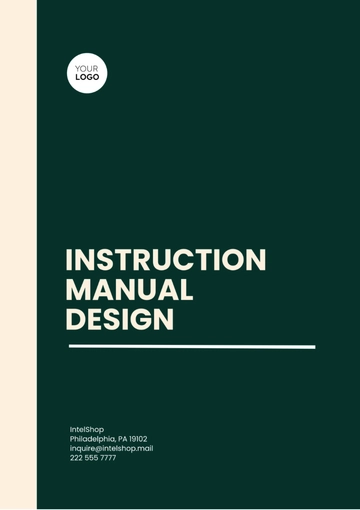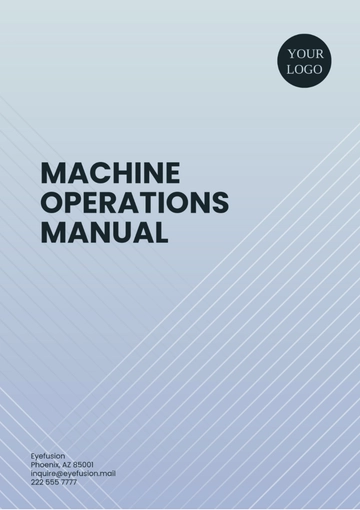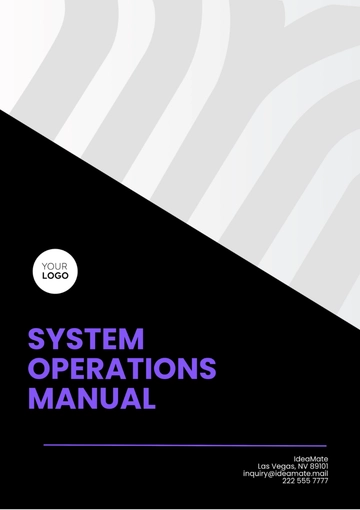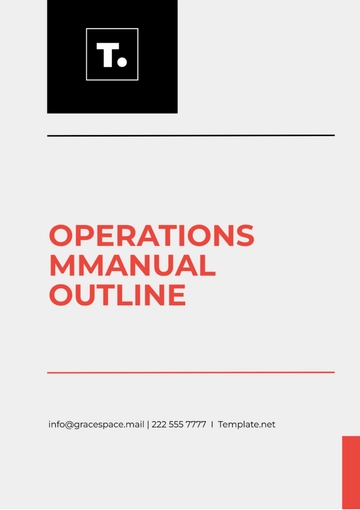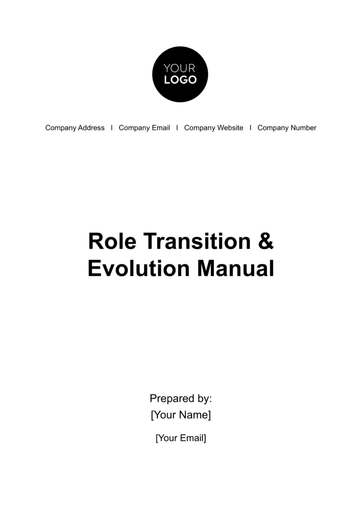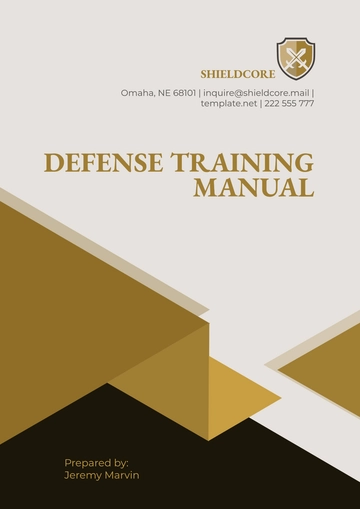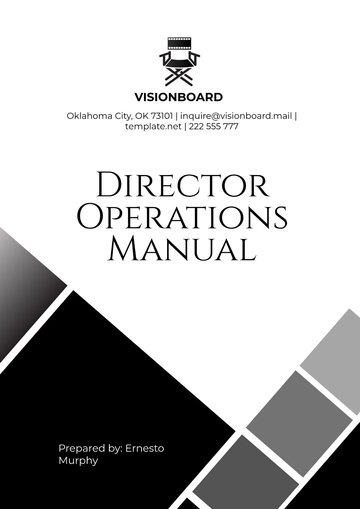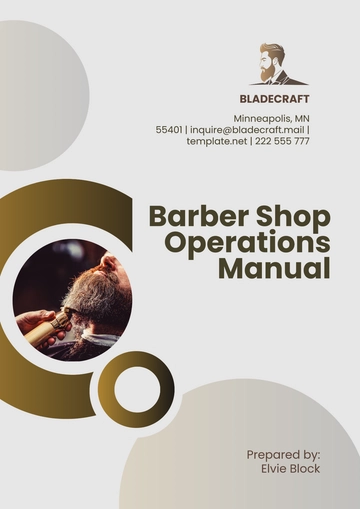Free Blank Bakery Maintenance Manual
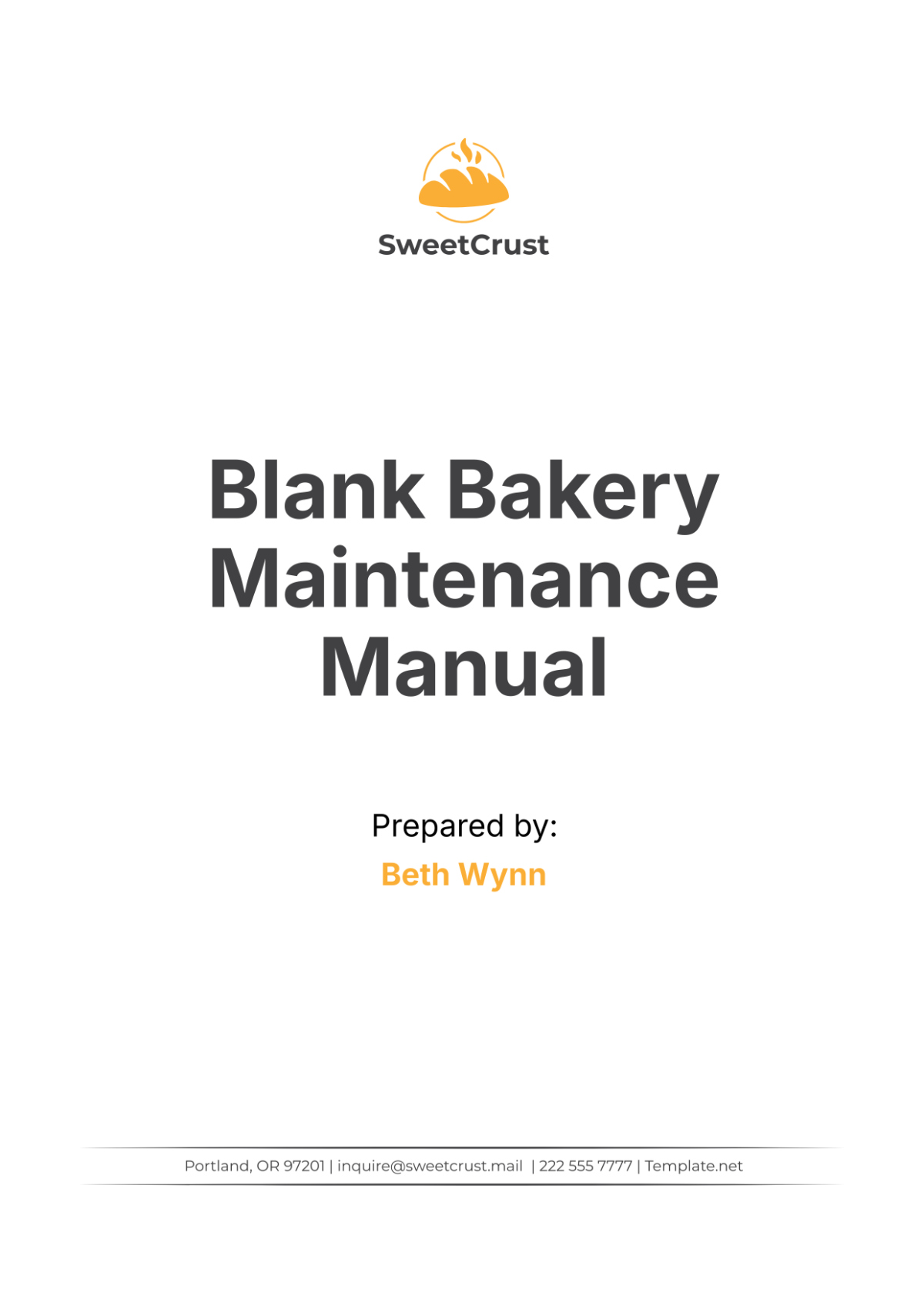
I. Introduction
A. Purpose of the Manual
(Write a paragraph explaining why the manual is important. Emphasize the role of maintenance in ensuring the bakery's efficient operation and product quality. Highlight the benefits of regular maintenance, such as minimizing downtime, extending equipment lifespan, and ensuring safety.)
B. Scope of the Manual
(Provide an outline of what the manual will cover. Mention the specific equipment, maintenance tasks, frequency of tasks, safety protocols, and any other relevant topics. Clearly define the boundaries of the manual's content.)
C. Audience
(Identify who the manual is intended for. Mention specific roles such as bakery staff, maintenance personnel, and management. Explain why each group needs to be familiar with the manual's contents.)
D. Overview of Maintenance Schedule
(Give a brief overview of the maintenance schedule that will be detailed in the manual. Mention the daily, weekly, monthly, and annual maintenance tasks. Explain how the schedule is organized and its importance in maintaining equipment efficiency.)
II. Safety Precautions
A. General Safety Guidelines
(Write a detailed section on general safety guidelines that all personnel should follow. Include guidelines on personal protective equipment (PPE), handling of hazardous materials, and general conduct in the bakery environment.)
B. Equipment-Specific Safety Measures
(For each piece of equipment covered in the manual, provide specific safety measures. Include instructions on how to safely operate, clean, and maintain each piece of equipment. Mention any potential hazards and how to mitigate them.)
C. Emergency Procedures
(Describe the procedures to follow in case of an emergency, such as equipment malfunction, fire, or injury. Include contact information for emergency services, instructions for using emergency equipment, and steps to take to ensure everyone's safety.)
III. Equipment Maintenance
A. Ovens
Daily Maintenance (List the daily maintenance tasks required for the ovens. Include cleaning procedures, inspection points, and any minor adjustments that need to be made. Provide step-by-step instructions for each task.)
Weekly Maintenance (Outline the weekly maintenance tasks. Include deeper cleaning procedures, more thorough inspections, and any necessary calibration or adjustments. Provide detailed steps for each task.)
Monthly Maintenance (Describe the monthly maintenance tasks. Include any parts that need to be replaced, comprehensive cleaning, and detailed inspections. Provide step-by-step instructions and any troubleshooting tips.)
Annual Maintenance (List the annual maintenance tasks. Include major overhauls, deep cleaning, and full inspections. Provide detailed instructions for each task, and mention any professional services that may be required.)
B. Mixers
Daily Maintenance (Detail the daily maintenance tasks for mixers. Include cleaning and lubrication procedures, inspection points, and any adjustments. Provide step-by-step instructions.)
Weekly Maintenance (Outline the weekly maintenance tasks. Include more thorough cleaning, inspection of parts, and necessary adjustments. Provide detailed steps for each task.)
Monthly Maintenance (Describe the monthly maintenance tasks. Include parts replacement, comprehensive cleaning, and detailed inspections. Provide step-by-step instructions and troubleshooting tips.)
Annual Maintenance (List the annual maintenance tasks. Include major overhauls, deep cleaning, and full inspections. Provide detailed instructions for each task and mention any professional services that may be required.)
C. Refrigeration Units
Daily Maintenance (List the daily maintenance tasks required for refrigeration units. Include cleaning procedures, temperature checks, and any minor adjustments. Provide step-by-step instructions for each task.)
Weekly Maintenance (Outline the weekly maintenance tasks. Include deeper cleaning procedures, more thorough inspections, and any necessary calibration or adjustments. Provide detailed steps for each task.)
Monthly Maintenance (Describe the monthly maintenance tasks. Include any parts that need to be replaced, comprehensive cleaning, and detailed inspections. Provide step-by-step instructions and any troubleshooting tips.)
Annual Maintenance (List the annual maintenance tasks. Include major overhauls, deep cleaning, and full inspections. Provide detailed instructions for each task, and mention any professional services that may be required.)
D. Other Equipment
Daily Maintenance (Detail the daily maintenance tasks for other equipment such as slicers, proofers, and dough dividers. Include cleaning and inspection procedures, and any minor adjustments. Provide step-by-step instructions.)
Weekly Maintenance (Outline the weekly maintenance tasks for other equipment. Include more thorough cleaning, inspection of parts, and necessary adjustments. Provide detailed steps for each task.)
Monthly Maintenance (Describe the monthly maintenance tasks for other equipment. Include parts replacement, comprehensive cleaning, and detailed inspections. Provide step-by-step instructions and troubleshooting tips.)
Annual Maintenance (List the annual maintenance tasks for other equipment. Include major overhauls, deep cleaning, and full inspections. Provide detailed instructions for each task, and mention any professional services that may be required.)
IV. Cleaning Procedures
A. Daily Cleaning
(Provide detailed instructions for daily cleaning tasks. Include steps for cleaning work surfaces, floors, equipment exteriors, and any other areas that require daily attention. Emphasize the importance of cleanliness in food safety.)
B. Weekly Cleaning
(Outline the weekly cleaning tasks. Include steps for deeper cleaning of equipment, storage areas, and other parts of the bakery. Provide detailed instructions for each task.)
C. Monthly Cleaning
(Describe the monthly cleaning tasks. Include comprehensive cleaning procedures for equipment, ventilation systems, and other areas that require less frequent but thorough cleaning. Provide step-by-step instructions.)
D. Annual Cleaning
(List the annual cleaning tasks. Include major cleaning projects, such as deep cleaning of hard-to-reach areas and professional cleaning services. Provide detailed instructions for each task.)
V. Record Keeping
A. Maintenance Logs
(Explain the importance of keeping detailed maintenance logs. Provide instructions on what information to record, such as date, tasks performed, and any issues identified. Include sample log templates.)
B. Cleaning Schedules
(Describe the importance of maintaining cleaning schedules. Provide instructions on how to document daily, weekly, monthly, and annual cleaning tasks. Include sample schedule templates.)
C. Inspection Reports
(Provide guidelines for conducting and recording equipment inspections. Include instructions on what to look for during inspections, how to document findings, and how to report issues. Include sample inspection report templates.)
VI. Troubleshooting
A. Common Issues and Solutions
(List common equipment issues and provide troubleshooting steps for each. Include detailed instructions on how to diagnose problems, potential solutions, and when to call for professional help.)
B. Emergency Repairs
(Describe the procedures for handling emergency repairs. Include instructions on how to perform temporary fixes, who to contact for immediate assistance, and how to document emergency situations.)
C. Professional Services
(Explain when it is necessary to call for professional maintenance services. Provide guidelines on how to choose a service provider, what information to provide them, and how to document the services performed.)
VII. Conclusion
A. Summary of Key Points
(Write a brief summary of the key points covered in the manual. Emphasize the importance of regular maintenance and adherence to safety protocols.)
B. Encouragement to Follow Procedures
(Encourage all personnel to follow the procedures outlined in the manual. Highlight the benefits of doing so for the bakery's operation, product quality, and safety.)
C. Continuous Improvement
(Emphasize the importance of continuous improvement in maintenance practices. Encourage feedback from staff and regular updates to the manual based on new information or changes in equipment and procedures.)
VIII. Appendices
A. Maintenance Checklists
(Include detailed maintenance checklists for all equipment covered in the manual. Provide step-by-step instructions for each task and space for recording completion dates and notes.)
B. Cleaning Checklists
(Include comprehensive cleaning checklists. Provide detailed instructions for each cleaning task and space for recording completion dates and notes.)
C. Contact Information
(Provide a list of important contact information, including maintenance personnel, emergency services, and professional service providers. Include instructions on when and how to contact each.)
D. Glossary
(Include a glossary of terms used in the manual. Provide definitions and explanations for any technical terms or jargon.)
E. Additional Resources
(List any additional resources that may be helpful, such as manufacturer manuals, online tutorials, and industry guidelines. Provide instructions on where to find these resources and how to use them effectively.)
- 100% Customizable, free editor
- Access 1 Million+ Templates, photo’s & graphics
- Download or share as a template
- Click and replace photos, graphics, text, backgrounds
- Resize, crop, AI write & more
- Access advanced editor
Manage maintenance effectively with the Blank Bakery Maintenance Manual Template on Template.net. This editable tool provides a comprehensive format for maintenance documentation. Utilize our Ai Editor Tool to create manuals detailing maintenance schedules, procedures, and equipment care, supporting organized and efficient maintenance operations in your bakery.
